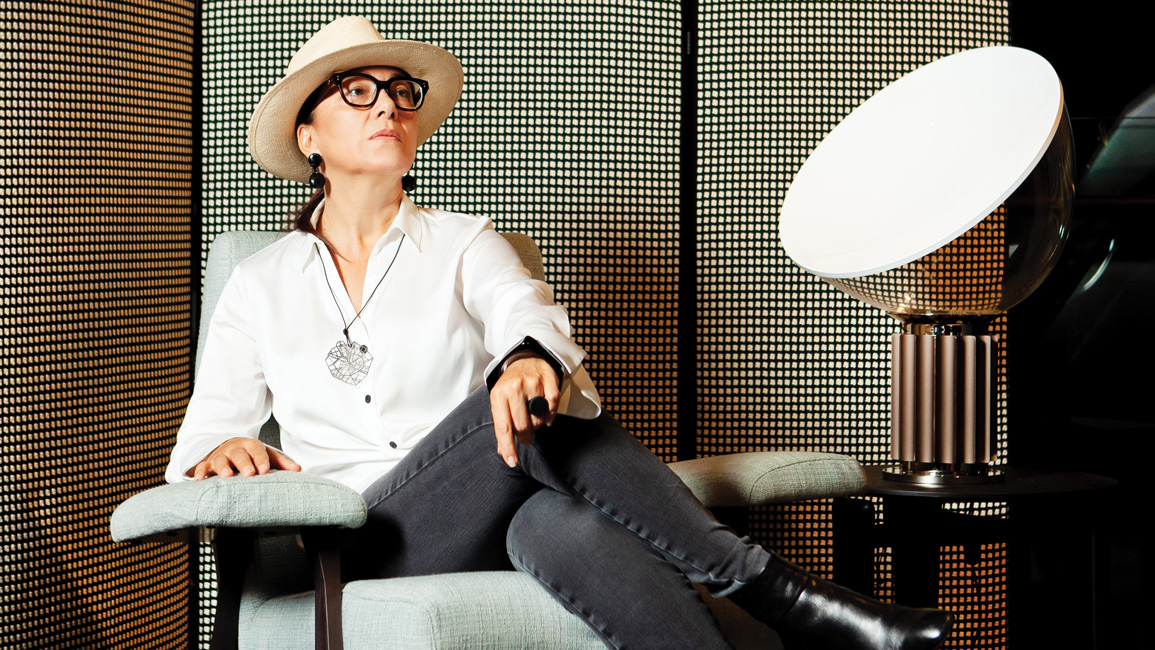
What is your design philosophy?
I see design as a process and a team working together. In this process, one of the most relevant factor is the context. Context is also my source of inspiration. My starting point is always the scale of the project. If I have to draw a table, I think of the room; if I have to draw a room I think of the building; if I have to draw the building I think of the city. The spatial dimension leads the design, after which comes into play many extremely important factors like the brief and budget.
Tell us about how something inspired a design.
I recently designed a small apartment in Singapore. I wanted something light, a delicate touch, a breath. With this idea in mind, I found the work of two artists, a photographer and a fashion designer who inspired me throughout the project, from the choice of materials to the colour palette. The photographer is Annie Leibovitz. One photo in particular from the American photographer enchanted me, the portrait of Misty Copeland, the first African-American female principal dancer with the American Ballet Theatre.
I was looking for the imaginary owner of this apartment and when I saw that portrait I thought she is the idealised muse of that exclusive 500ft2. I liked her posture and the floating but determined silhouette. The fashion designer is Molly Goddard. I came across to her work because it was featured in The Gentlewoman magazine. I fell in love immediately with her sweet-but-twisted girls dressed up in voluminous, hand-pleated tulle waves. Yes, the key idea was floating, like a bubble in a glass of champagne.
How does your work differ from other designers?
I do not think I should follow a style. Undoubtedly, my personal background and path of training influenced me a lot. However, no matter how luxurious or extreme the client’s brief is, in the end we must live in that space; we must carry out our human activities, which are basically relational, experiential and collective. What I want to offer is a better way of living starting from these three key conditions of the human experience.
What is the most interesting project you have worked on to date?
All projects are special to some degree. But a project that I feel very close to is Hamaya Spa in Surabaya, which I did for an Indonesian client. My inspiration was female convent architecture: Bare walls, large blocks of stone, materials that are eternal, like true beauty. Onto it I added gold and light – gold was the tonality of light, the finish of metal, the colour of glass. I also added a fire place in every treatment room.
What is the top challenge you face right now and how do you overcome it?
The key word is adaptability and exactness. Adaptability opens you to the conditions of the project. Imagine that there is a sort of logistic binary that we cannot change (costs, production time, customer expectations and also customer taste). Then there is a non-negotiable core, which is the DNA of your idea. This core must be preserved at all costs, otherwise the innovative charge of the project is compromised.
Why do you enjoy purchasing pieces from Space Furniture?
In 2018, I was the art director of the Italian Design Day in Singapore, an event that transforms all the Italian Embassies in the world for one day on 1 March. Space Furniture contributed to this event with a wonderful table from Cassina designed by Carlo Scarpa in 1970. It has made available in Singapore the legacy of designers like Carlo Scarpa, Eileen Gray and Arne Jacobsen who are masters of design who “wrote” its history.
I see design as an inclusive process, a team working with many different skills converging. There is not only “the” designer. I think designers, suppliers and contractors should have more opportunities for meeting and dialogue. I think at the base of a good project, there is the aspiration to a high-profile aesthetic-technical result. Space’s showroom goes beyond its mere role as a showcase for beautiful furniture. It is also a meeting point and cultural production place. This is the added value that e-commerce cannot offer now.
This story is produced in collaboration with Space Furniture. It first appeared in Issue 108: February/March of d+a.


 Share
Share









